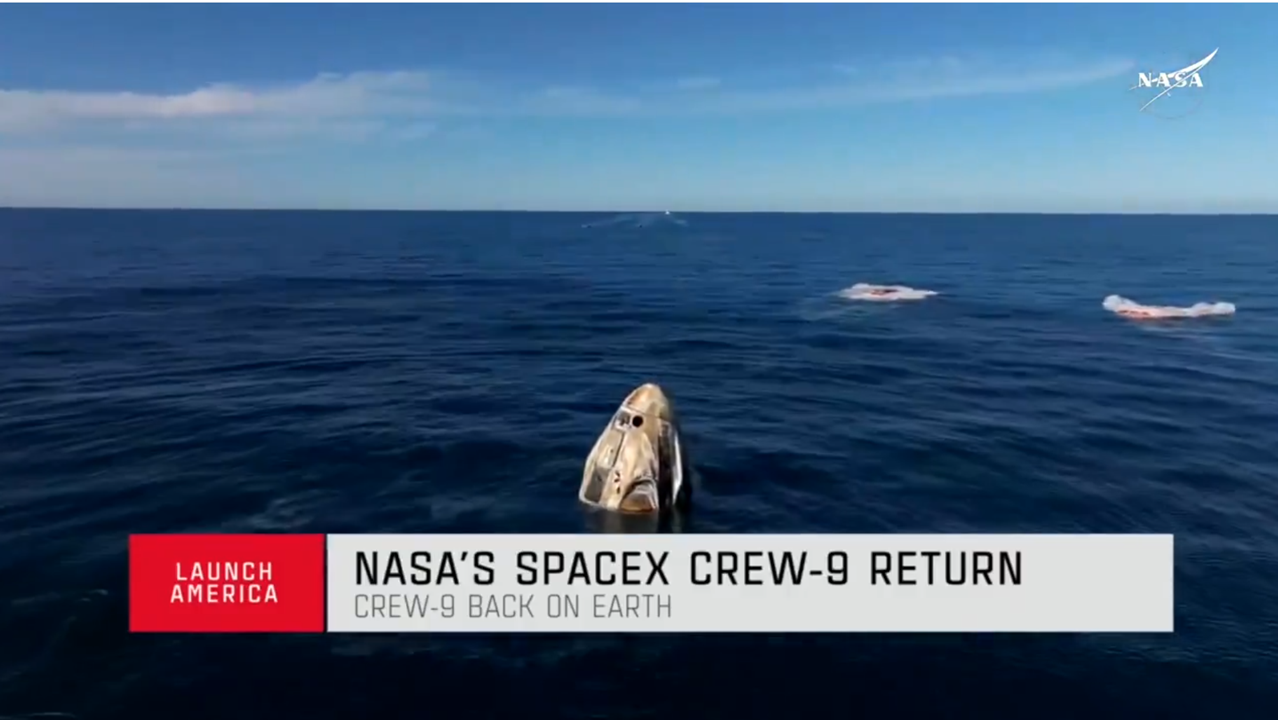LISTEN TO THIS STORY:
(TAMPA) Tuesday, March 18th was a memorable day for Butch Wilmore and Suni Williams, two astronauts whose mission to space took an unexpected turn, keeping them in space for much longer than anticipated. Originally, they were set to travel for a week or so. However, following the launch of Boeing’s new Starliner crew capsule on June 5th, technical issues forbade them from returning on time and sent them into a 286-day orbit.
Their journey back home began Sunday, March 16th, when a relief crew arrived at the International Space Station to replace them and send them back home. Wilmore and Williams said their goodbyes to their life in space and headed home in a SpaceX capsule nearly ten months later than originally planned. After two days of descending to Earth, they landed safely into the Gulf of Mexico, just off the coast of Tallahassee, Florida, on Tuesday evening.
Suni Williams spoke with CBS News while on board the International Space Station and reflected on her journey, emphasizing how she managed the uncertainty and made the most of it.
“I was on week 12 of writing a journal to send down to folks and I feel very fortunate about that, being able to send it to people and they can understand what we are doing up here,” said Williams. “They can see that we are living in a remote area but we are doing world-class science and living with other people for the betterment of so much.”
While their return to Earth was celebrated, Wilmore and Williams needed immediate medical evaluations to assess the impact on their bodies from prolonged space travel. Upon returning, they were held for two days until their bodies adjusted to gravity. The graphic created by the Canadian Space Agency highlights various risks associated with extended missions, including loss of muscle mass and bone density, fluctuations in blood circulation, DNA damage from radiation and increased risks of cancer. These effects are similar to symptoms associated with aging and sedentary lifestyles, further raising health concerns for astronauts.
Despite the physical challenges she faces, Williams remained optimistic about the mission’s overall impact.
“Being able to have a perspective out the window, as well as a perspective upside down or sideways, is something I hope we can pass on to the rest of humanity,” said Williams.
The astronauts performed a variety of experiments, assisted with ISS maintenance, and made significant contributions to research that will guide future deep-space missions throughout their prolonged stay. With NASA and other space organizations aiming for trips to the Moon and Mars, the extra time in orbit enabled them to collect important data on the long-term impacts of space travel.
After an unanticipated detour, Wilmore and Williams’ prolonged trip demonstrates the adaptability and resiliency needed for space travel. Their experience serves as a reminder of the difficulties astronauts encounter when pursuing scientific discoveries and provides important insights into the realities of long-term space travel. Missions like theirs will be vital in determining the direction of human space travel in the future as space organizations keep pushing the frontiers of exploration.

